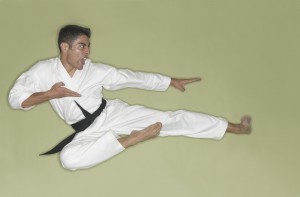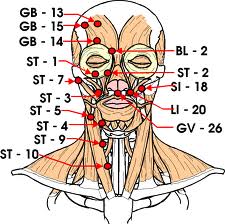September 2, 2011
Everyone was Kung Fu fighting
Filed under: Murderati blogs,Research,Uncategorized — PD Martin @ 12:33 pm
My latest blog over at Murderati…
 This is another instalment in my research series and I’ve just realised I seem to be working backwards. The posts on my research into real-life vampires and cults (part 1 and part 2) all looked at research that happened for Kiss of Death (my fifth book) and today’s post is about Kung Fu’s Ten Killing Hands and dim-mak, which featured in my fourth book. Anyway…get ready to be wowed by the world of Kung Fu!
This is another instalment in my research series and I’ve just realised I seem to be working backwards. The posts on my research into real-life vampires and cults (part 1 and part 2) all looked at research that happened for Kiss of Death (my fifth book) and today’s post is about Kung Fu’s Ten Killing Hands and dim-mak, which featured in my fourth book. Anyway…get ready to be wowed by the world of Kung Fu!
The Ten Killing Hands
The Ten Killing Hands, developed by Wong Fei Hung in China, are ten kung-fu strikes (or series of strikes) that are meant to either severely disable or kill your opponent, sometimes with one blow. It boils down to ten principles: strike the eyes; stop the breath; break the face; explode the ears; crush the groin; twist the tendons; break the fingers; dislocate the joints; break the elbow, and attack the nerve points. It’s nasty, but effective. And, in the hands of a trained practitioner, deadly.
I’ll give you a little taste. One of the strikes used to break the face is the Double Back-Fist targeted directly below the eyes – the aim is to blind your opponent by shattering their eye sockets so their eyeballs literally collapse over their face structure. Nice, huh?
Dim-mak
 While the Ten Killing Hands are fascinating, probably the most interesting research I did was on dim-mak. Dim-mak is often referred to as the death touch, and is based on the premise that striking certain acupoints can cause instant or delayed death. It sounds like the stuff of fairytales — of legends and movies like Kill Bill — but it’s real. And in fact, Uma Thurman’s Five Point Palm Exploding Heart Technique in Kill Bill is about five blows, in a specific order, which will stop blood flow to the heart. And that is dim-mak.
While the Ten Killing Hands are fascinating, probably the most interesting research I did was on dim-mak. Dim-mak is often referred to as the death touch, and is based on the premise that striking certain acupoints can cause instant or delayed death. It sounds like the stuff of fairytales — of legends and movies like Kill Bill — but it’s real. And in fact, Uma Thurman’s Five Point Palm Exploding Heart Technique in Kill Bill is about five blows, in a specific order, which will stop blood flow to the heart. And that is dim-mak.
There are multitudes of dimmak acupoints on the body, and strikes to different points cause different physical afflictions. For example, one of dimmak’s strike points is on the side of a person’s neck. In Kung Fu it’s called Stomach Point 9, but it’s also directly on the carotid artery and vagus nerve. A strike to Stomach Point 9 is said to bring instant or delayed death and there is science behind the claim. The best book I found on this was Death Touch: The Science Behind the Legend of Dim-mak by Dr Michael Kelly. Dr Kelly is an MD who also happened to study Kung Fu and decided he wanted to explore dim-mak from a medical perspective.
The book is amazingly thorough and quite technical in places, talking about how the dim-mak strikes often target bundles and/or peripheral nerves, and attacking these points can cause changes in the autonomic nervous system — which controls important stuff like blood pressure, heart rate, digestion, breathing, and so on. The theory is that direct strikes can fool the nervous system into doing something it wouldn’t normally, like speeding up your heart rate or increasing your blood pressure.
Sometimes the explanation is more simple…back to Stomach Point 9. These days, many people have plaque build-up in their arteries, especially if they’re older, have a genetic predisposition or unhealthy eating habits. So, if you strike someone on their neck with enough force and in a particular manner they can have a heart attack or stroke instantly, or days later when the loosened plaque makes its way to their heart or brain. Plus, a hard strike, even on a healthy person, can cause degradation of the artery that may have lethal effects down the track.
 Although other organs are targeted, the heart is often the focal point for dim-mak strikes. The pressure points attack the heart in one of three ways – heart attack, ventricular fibrillation or something called heart concussion. Again, Dr Kelly’s book came in handy! The medical, Latin term for heart concussion is commotio cordis. It’s not a common cause of death, not something you read about much in the newspaper, because it’s rare to have a strike directly to the heart that’s hard enough to cause it. Most reported cases involve sporting accidents, like trauma from a hockey puck, a baseball, a hockey stick, etc. But obviously if a trained Kung Fu practitioner can elicit enough force…
Although other organs are targeted, the heart is often the focal point for dim-mak strikes. The pressure points attack the heart in one of three ways – heart attack, ventricular fibrillation or something called heart concussion. Again, Dr Kelly’s book came in handy! The medical, Latin term for heart concussion is commotio cordis. It’s not a common cause of death, not something you read about much in the newspaper, because it’s rare to have a strike directly to the heart that’s hard enough to cause it. Most reported cases involve sporting accidents, like trauma from a hockey puck, a baseball, a hockey stick, etc. But obviously if a trained Kung Fu practitioner can elicit enough force…
The dim-mak knockout
The dim-mak knockout, also called a pressure-point knockout, is famous in many circles. One, two or three strikes and the person drops to the ground. Many dim-mak experts use these strikes to demonstrate the power of dim-mak in workshops and seminars. According to the medical explanation it’s a vasovagal faint, caused by a sudden drop in blood pressure.
Yin and yang
 Of course, the acupoints aren’t just about dim-mak and martial arts. The more commonly known use of these acupoints comes from Chinese healing — acupressure or acupuncture. The points are struck to cause pain and death, but they can also be massaged or stimulated with acupuncture for healing purposes. They go hand in hand, for use as a weapon or as a healing tool. Yin and Yang.
Of course, the acupoints aren’t just about dim-mak and martial arts. The more commonly known use of these acupoints comes from Chinese healing — acupressure or acupuncture. The points are struck to cause pain and death, but they can also be massaged or stimulated with acupuncture for healing purposes. They go hand in hand, for use as a weapon or as a healing tool. Yin and Yang.
Stomach Point 9 also has a healing purpose in Western medicine. The site of the carotid sinus and vagus nerve is an extremely sensitive area and when someone’s suffering from an arrhythmia, doctors will often use ‘vagal maneuvers’ as a treatment. A simple massage along the vagus nerve has been shown to decrease the chances of a fatal ventricular fibrillation.
Now, I’m afraid I do feel it necessary to take this chance for a bit of BSP (blatant self-promotion) in terms of my book trailer for The Killing Hands. But it IS very relevant!
At this point I should also mention that I hold a black belt in Kung Fu. I’m very much out of practice (haven’t trained for about five years) but when I did study it my lessons were tax-deductible. Gotta love an author’s tax deductions!
So, who out there studies Kung Fu or has heard of dim-mak before? And feel free to share any amazing tax deductions too!
Comments OffNo Comments
No comments yet.
Subscribe to comments feed for this post.
Sorry, the comment form is closed at this time.


